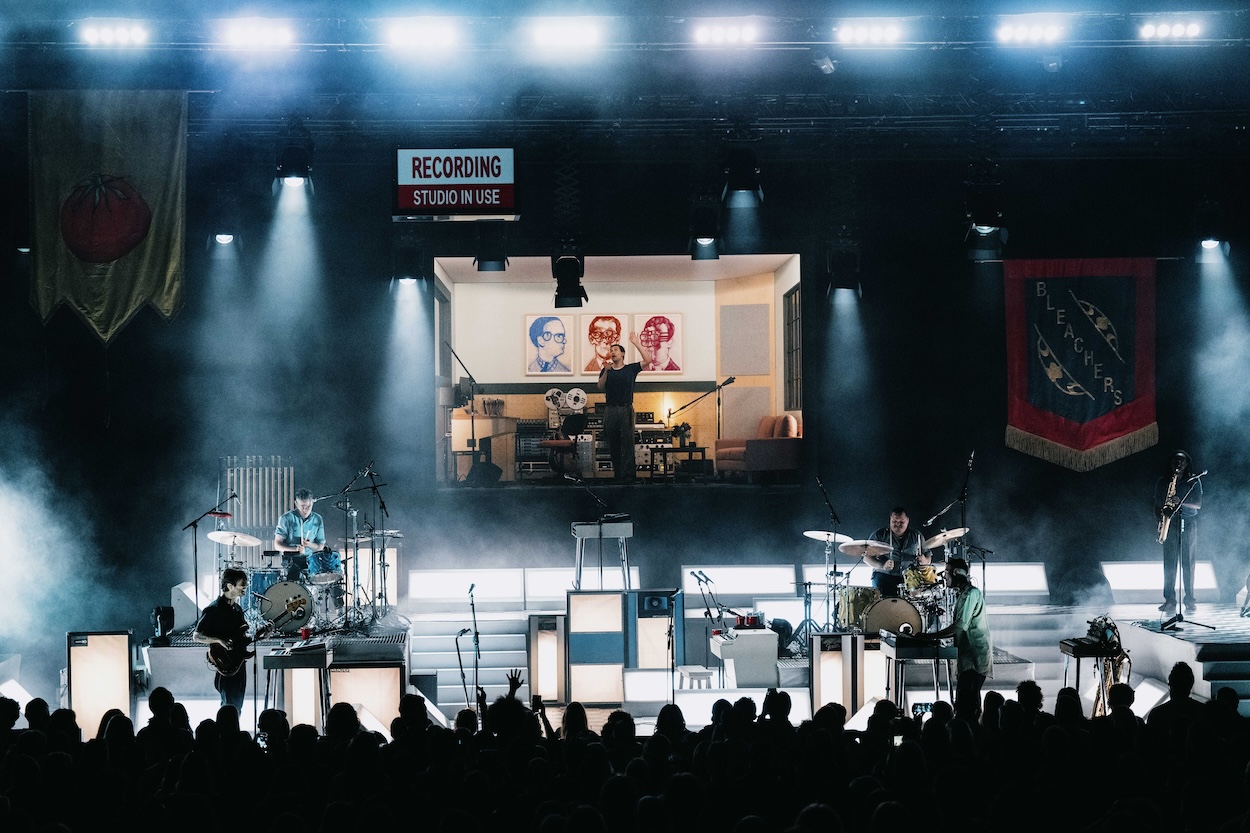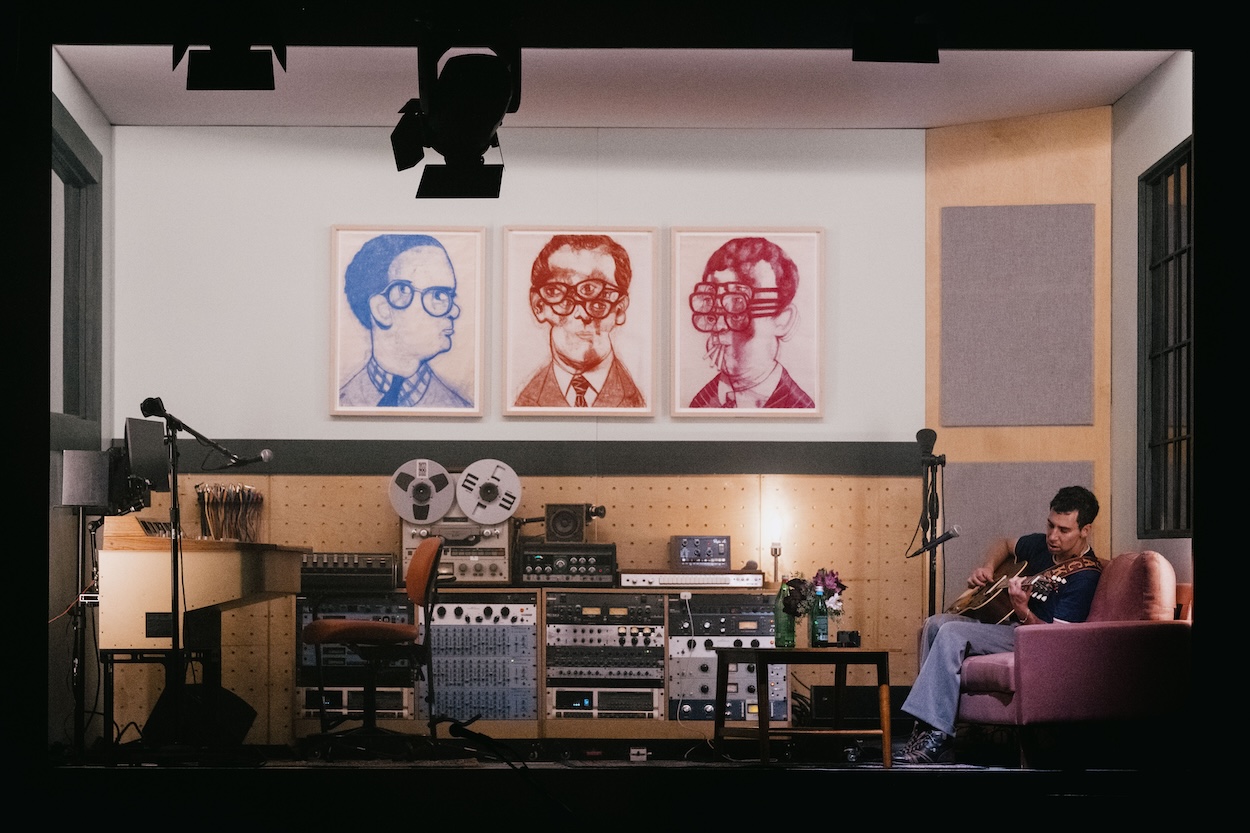
16 Oct How Electric Lady Studios Came Alive at Madison Square Garden
Source Credit: Content and images from Surface Magazine by . Read the original article - https://www.surfacemag.com/articles/electric-lady-studios-bleachers-tobias-rylander/
Show designer Tobias Rylander speaks on channeling Electric Lady Studios, David Bowie, and the theater world for Bleachers’ From Studio to the Stage tour finale at Madison Square Garden.
BY JENNA ADRIAN-DIAZ
October 16, 2024

Credit (all images): Jordan Curtis-Hughes
…
If Jack Antonoff is pop’s most prominent sound architect, production designer Tobias Rylander is one of the most enduring image makers working in the genre and beyond. Rylander, a longtime collaborator of Beyoncé and The 1975, has crafted the visual identity and lighting design for live performances by Lykke Li, fka twigs, the Strokes, and Antonoff’s own band, Bleachers.
At its most compelling, Rylander’s approach to set and production design takes cues from the mediums of film, television, and theater—his latest commission, for the Swedish Royal Opera Ballet’s production of “Gustavia,” premieres on Oct. 18—to turn arena stages into deeply personal reflections of the performers’ artistry. For Bleachers’ recent world tour, Rylander was tasked with realizing Antonoff’s vision of bringing a functional replica of Antonoff’s production space at Electric Lady Studios to the stages of Madison Square Garden and the Greek Theater in New York City and Los Angeles, respectively.
“He’s such a staple at Electric Lady that he’s kind of become that room in a way,” Rylander recently told Surface. “Any and all musicians he works with come there.” If you’ve heard a pop hit lately with hazy synths, shimmering instrumentals, vocals best described as ‘haunting,’ and a pulse-quickening bridge, Antonoff has probably had a hand in it; the producer’s collaborators include Lana Del Rey, Sabrina Carpenter, Taylor Swift, and more. “Bleachers fans are what I call educated fans. They know a lot about the band, its music, its history, and they’re usually as much fans of Jack and his work with other artists,” Rylander says. “It becomes a really big family affair.”.

In the following interview, the set designer shares how a 1982 David Bowie performance influenced his recent scenography for Bleachers and how he translates sound into a visual identity for some of the biggest performers taking to the stage today.
Fans can hear commonalities between Bleachers’ sound and the music of artists Jack produces with. Is that something you’ve encountered when working with him and, say, the 1975?
I think so. Everything inspires everything. You can read a lot of Matthew [Healy, frontman of The 1975] in Bleachers and a lot of Jack in The 1975. They’re both brilliant, creative minds who know what they want.
Like your sets for the 1975, this one was very architectural and incorporated furniture.
It’s a theater set. We’ve started seeing that more in the pop culture world. I guess we’re setting a little mark there.
How do you translate sonic signatures into a visual identity?
I analyze the artist and who they are visually. A lot of artists have a visual language already in terms of color schemes or a certain kind of photography they like, whether they’re analog or high-tech, or high art or laid-back.
That’s how I started with [Bleachers] as well, both to study where they had been previously and with insight into the production of the record, the campaign assets, the photography, and artwork. I took all those as little puzzle pieces and put them together to try to find something that represented all of that.

Where did you land, and how did that inform their set design?
I kept coming back to something timeless, in a historical way. I wanted the lighting to be TV studio fixtures. The light boxes are not normal tour fixtures, they’re film set panels that we built into the set pieces on the stage. They in turn were inspired by a 1982 David Bowie show where they also had film lights as side lights because they were filming that concert.
Who came up with the idea to replicate Electric Lady Studios?
It was 100 percent Jack’s idea. I think he wanted that before he even started recording the album. When we designed the show, it was very early on that Jack was like “I want the studio to be on the stage.”
How much of the equipment in the studio replica was fully functional?
Quite a bit. The [live] recording isn’t analog, but it’s mixed backstage by the same mixer who made the record. But all the microphones and cabling, all of that is real and true equipment. Even the artwork on the wall is an exact scale replica of the art in the studio, [by painter Ian Healy]. It’s signed.
How does the audience factor into the experience you create?
The audience is the reason we make concerts. Bleachers is a very happy and kind band, and so is their music. I’m working with a Swedish band called Ghost. It’s real metal. We also do interesting stuff with set design but it’s all church ruins and pentagrams and scary stuff. The type of music and artist informs it, but it’s also [about] what the audience wants.
Previous
Source Credit: Content and images from Surface Magazine by . Read the original article - https://www.surfacemag.com/articles/electric-lady-studios-bleachers-tobias-rylander/

